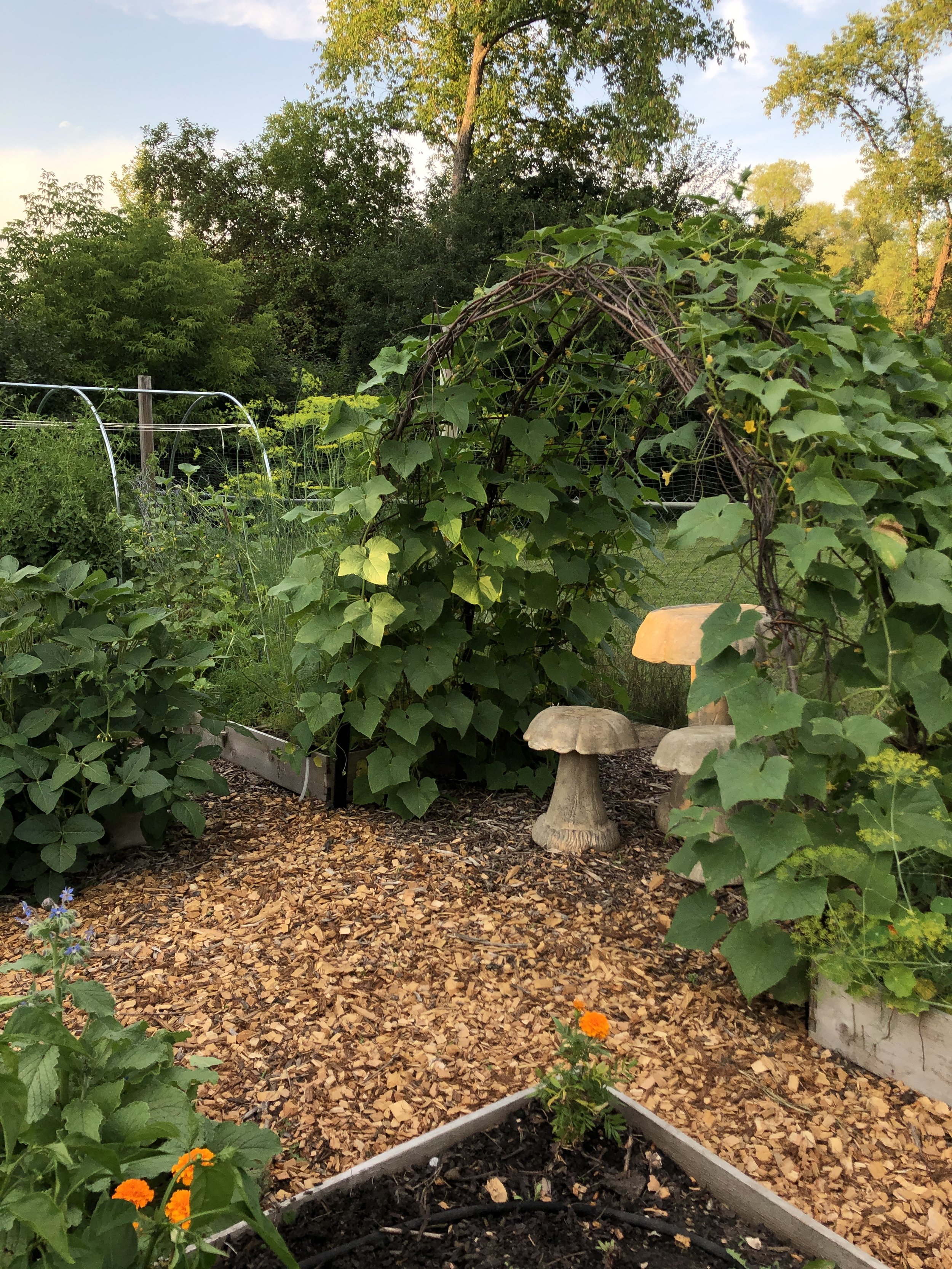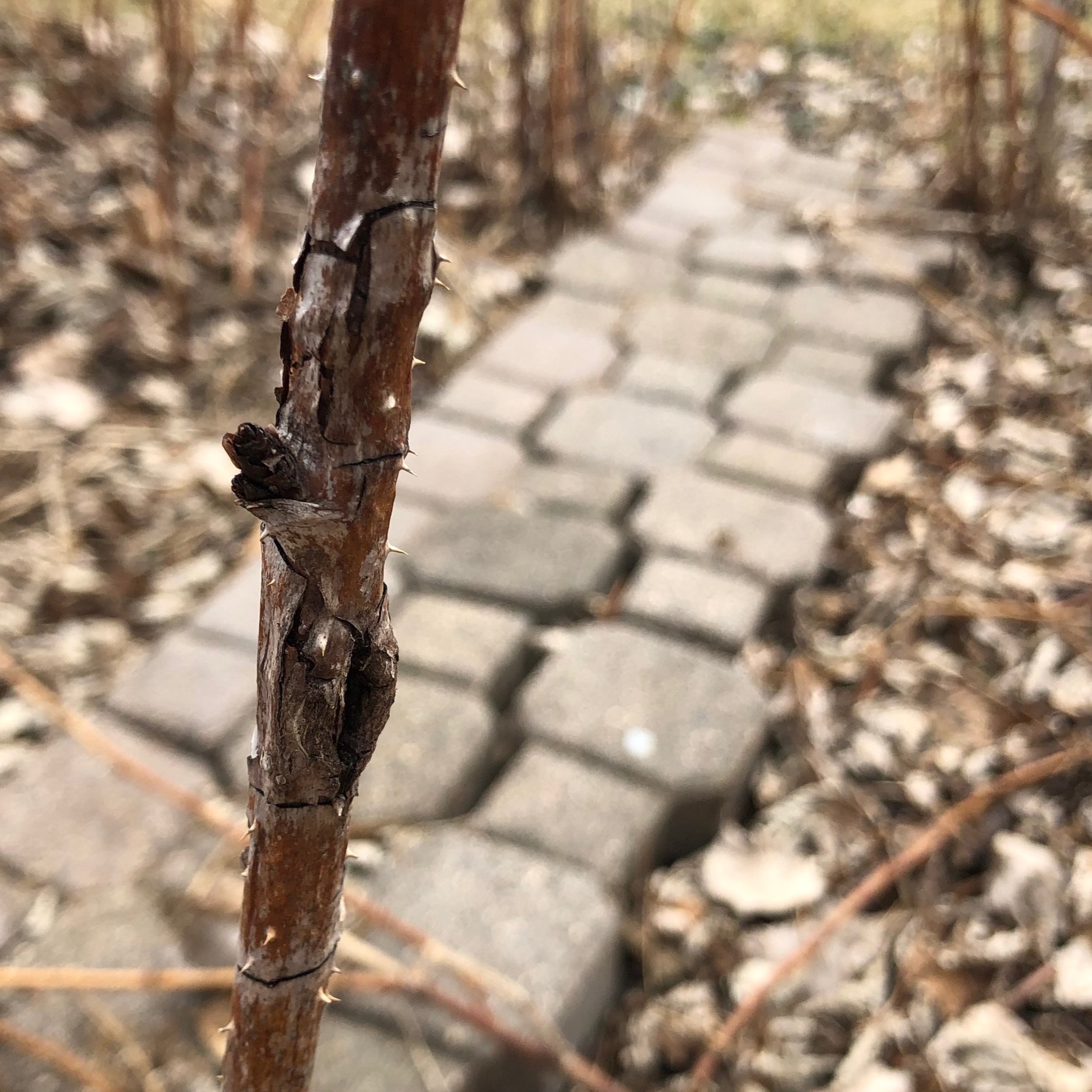The bark of dead canes is grayish, cracking and peeling. These canes should be cut down to the ground and removed.
When pruning fall-bearing raspberries for a summer harvest, make a diagonal cut just above the first bud that did not produce fruit the previous season.
Buds that did not produce fruit the previous season (where I’m pointing) will often have a dried stem from the previous year’s leaves, but you will see that the bud is both alive and has no remains of the stems or flower parts of the previous year’s raspberries (unlike the spent buds to the left of my hand, further up the cane).
Late winter is an ideal time to prune your raspberries. By this time, the carbohydrates stored in the canes have had the chance to return to the roots to be stored as energy for the next season. However, pruning in the fall after the last harvest is also a prudent time to prune, and may be preferred in cases where disease is a concern. But before you can prune your raspberries, you need to understand the growth cycle of raspberries and which of the two types of raspberries you are dealing with.
Raspberry Life Cycle
Raspberries are perennials - their roots and crowns live on season to season, producing new canes each spring. The canes on the other hand only last for two seasons and then die back. “Summer-bearing” raspberries produce fruit in the summer, but only on second-year canes (floricanes). “Fall-bearing,” also known as “everbearing” raspberries, produce fruit in the fall on first-year canes (primocanes) and in the summer on their second-year canes.
Summer-Bearing Raspberries
To know if you have summer-bearing raspberries, watch what the new primocanes do. If you’re worried about getting the primocanes mixed up with the floricanes, you could mark emerging shoots in the spring with a ribbon. If those primocanes don’t produce any fruit their first season, they are summer bearing raspberries, and you can expect a summer harvest the following year. Here’s what to do with summer-bearing raspberries:
Look through the canes and cut any dead canes down to the ground. The bark on dead canes will be grayish, cracking and peeling.
Also go through your patch and cut skinny and damaged canes down to the ground, as close to the soil as possible.
Leave all other canes because they will produce fruit for you in a few months!
Fall-Bearing Raspberries
You can follow a similar game plan to determine if you have fall-bearing raspberries. Watch what those newly sprouting primocanes do. If they produce some berries by the end of the season, you have fall-bearing raspberries. In this case, you have two choices when it comes to pruning:
One option is to cut every single cane down to the soil. This means that all your canes will be primocanes, and you will get one rather large harvest in the fall.
Your other option is to allow the floricanes to continue, in which case you would get a modest summer harvest, as well as a modest fall harvest of that year’s new primocanes. If you go this route, follow these steps:
Look through the canes and cut any dead canes down to the ground. The bark on dead canes will be grayish, cracking and peeling.
Go through your patch and cut skinny and damaged canes down to the ground, as close to the soil as possible
Finally, address all the floricanes. These will have reddish-brown bark and evidence of the past season’s fruit production - dried raspberries that never fully developed or the raspberry sepals (the five-part leaf-like tops of the flower and later the fruit). Make a diagonal cut right above the first bud you can find on the stem that does not look like it produced fruit the previous season. New fruit will form further down the cane on new buds.
The following season, all these floricanes will become the dead canes, the primocanes become the floricanes, and the cycle continues!















